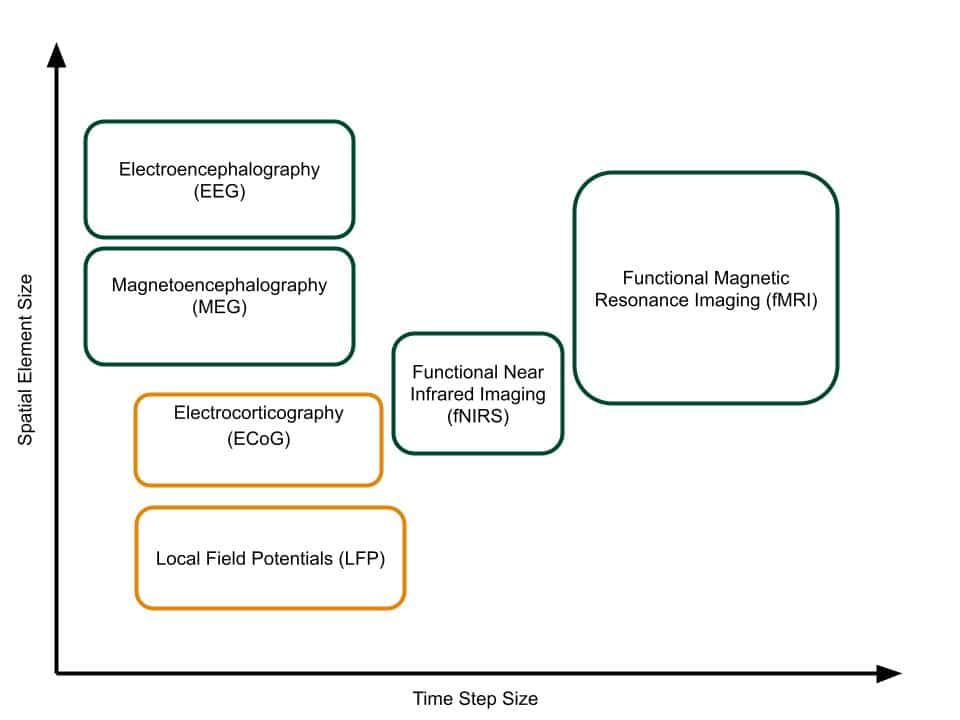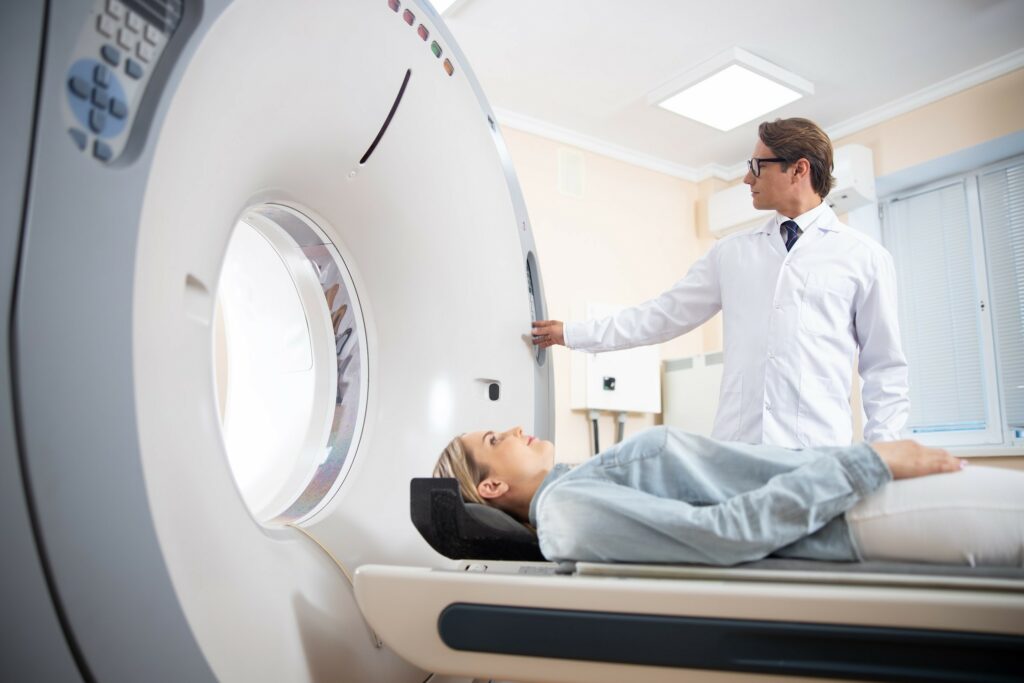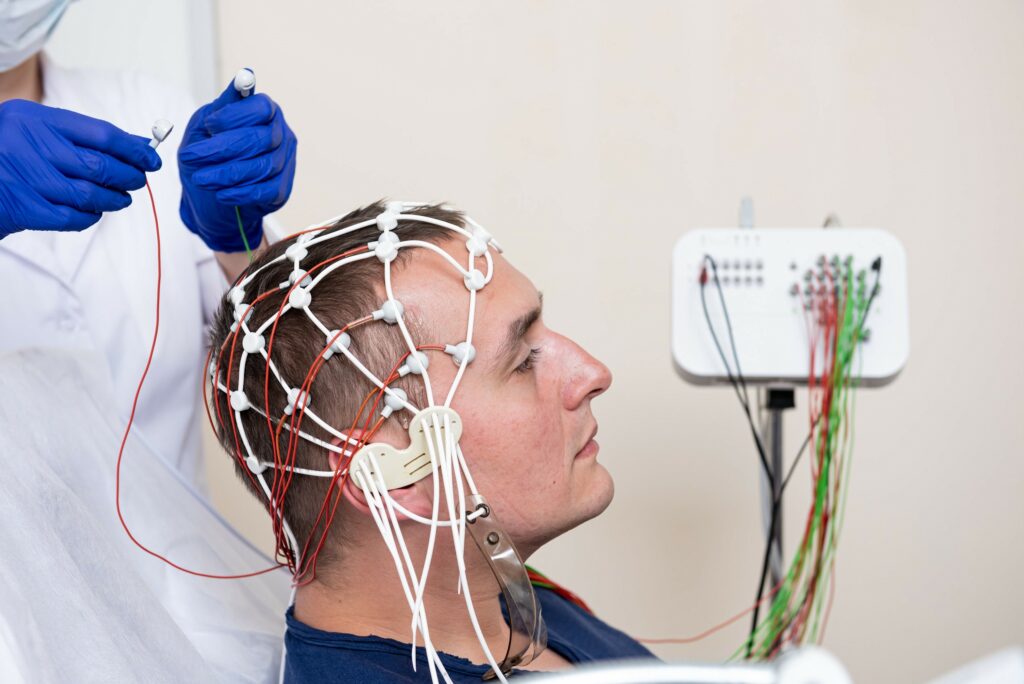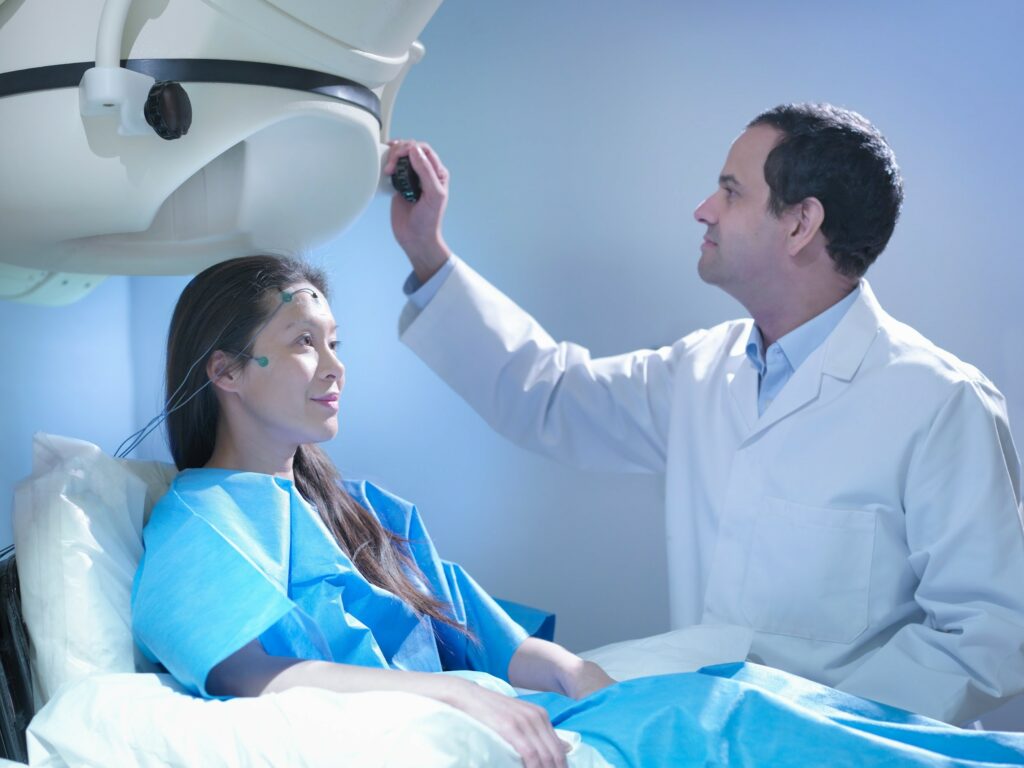Methods of Brain Activity Measurements
There are many methods for measuring brain activity. Each method differs in its invasiveness, time and spatial resolutions, and other practicalities. Commonly used techniques to record brain activity are illustrated in the picture below.

Local Field Potential (LFP). The LFP technique uses micro needles to penetrate the brain tissue and make extracellular electrical activity recordings from deeper brain structures. It offers good resolution both in time and spatial domains. However, this is a very invasive technique, requiring small holes to be made in the scalp and skull for insertion. Hence, this method is limited to very specific research.
Electrocorticography (ECoG). ECoG technique, like LFP, requires opening of the skull but the electrodes or electrode array is placed on the surface of the brain this time and does not penetrate the brain tissue. It measures the electrical activity of the outer parts of the brain – the cortex. Therefore, it can’t measure the deep brain structures and the spatial resolution is lower when compared to LFP. The electrodes are typically implanted during the planned brain surgeries and the application outside clinical or laboratory environments is limited.
Functional Magnetic Resonance Imaging (fMRI). fMRI measures brain activity through changes in the blood flow. It is a versatile non-invasive technique and can study the whole volume of the brain. Spatial resolution varies greatly depending on the fMRI devices and if the whole brain is being scanned or just a particular area of interest. However, the application of fMRI is again limited to clinical or laboratory settings as the equipment is physically very large and expensive.

Electroencephalography (EEG). EEG measures electrical signals using the electrodes placed on the outside of the scalp. It measures some average response from a population of neurons mainly from the outer parts of the brain, i.e. cortex. The technique suffers from lower spatial resolution and decreased signal-to-noise ratio when compared to LFP or ECoG. Nonetheless, it does have many practical advantages such as being a non-invasive method with many devices being reasonably priced and portable too. Many EEG apparatuses now allow for measurements to be made in typical living environments.

Magnetoencephalography (MEG). MEG records the electrical activity of the brain indirectly by measuring associated magnetic fields. It is a non-invasive method and the MEG sensors do not touch the person’s head and can even allow for small head movements. It is selective to certain electrical activity and generally offers slightly better spatial resolution than EEG because magnetic fields are less affected by the skull and scalp. However, the equipment is more expensive and bulky and usually requires well-isolated rooms from electromagnetic noise for good-quality recordings.

Functional near infrared spectroscopy (fNIRS). fNIRS technique, similar to fMRI, observes the hemodynamic response of the brain by measuring the oxygenation level, which increases with elevated activation of local neuron populations. The temporal resolution of fNIRS is generally lesser than the EEG because it measures brain activity indirectly through the changes in the blood flow. However, near-infrared can penetrate further through the skull and measure from the neuronal structures deeper within the brain when compared to EEG. In addition, no contact or scalp preparation is needed for the measurements to be made, although the emitter and sensor placement stability or the person’s hair may have a significant influence on the quality of the measurements. The fNIRS devices are becoming more portable and in some cases it is also being combined with EEG sensors offering a versatile measurement system.
These are probably the most popular brain activity measurement methods, nonetheless, this list is by no means exhaustive. The techniques are also improved every day to get a better glimpse into how our brains work.
Our favorite technique is EEG due to its ability to measure brain activity directly and most importantly being a non-invasive method. While it lacks temporal and spatial resolution when compared to LFP or ECoG techniques, the advantages of EEG being non-invasive, portable, and relatively cheap widens its application horizons considerably.
